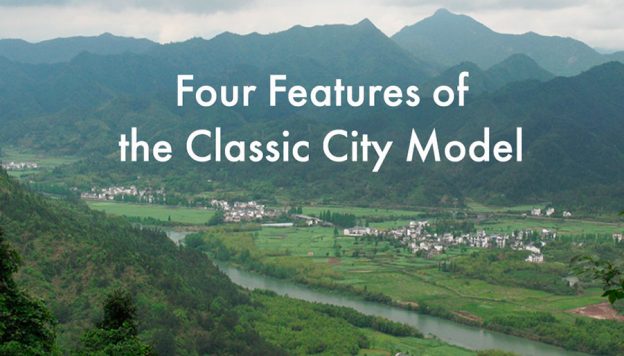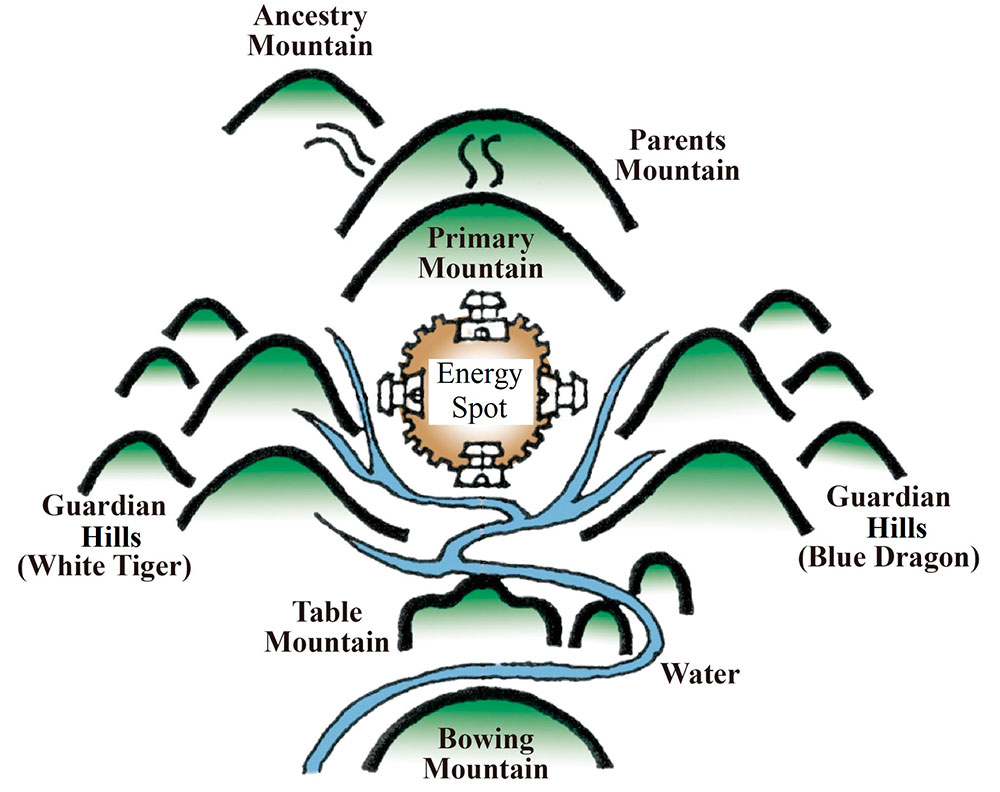The Diagram below shows an ancient Chinese classical model of an ideal city site – a classical model of a city from the Form School Feng Shui perspective.
The basic coordination of the Four Features is the same: Mountains at the back, Water in front, Energy Spot in the center, and Guardian Hills on both sides.
In order to avoid confusion about “right” and “left” in Feng Shui, the Guardian Hill on the left side (from the viewpoint of the object) is referred to, as the Blue Dragon, and the Guardian Hill on the right side is the White Tiger.
The Table Mountain in the near front and the Bowing Mountain in the distant front create a defined closed environment in which the Chi-Energy is retained. This “contained” model is not only designed to retain the Chi-Energy, but also provides psychological comfort. This is because defined space resonates with the finite human life span.
In general, when facing an undefined space, people do not feel as settled emotionally. This diagram also shows the entanglement of Mountain (landmasses) and Water, the zigzag river course. As we expressed earlier, in a Taiji, Mountain is Yin and Water is Yang. Therefore, tranquil Water with a Yin quality is more ideal. That is why a curved river smoothly weaving through landmasses is considered better than a fast running river raging straight forward.
Metaphorically, Mountain and Water respectively represent feminine and masculine energies: the more embracement, the stronger the connection.
In the next post, we will show how a modern, successful university campus design reflects this classic model.
All Dr. Hsu talks on Feng Shui


